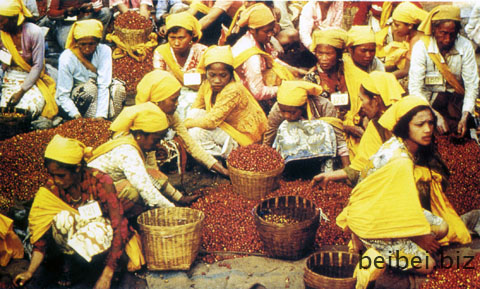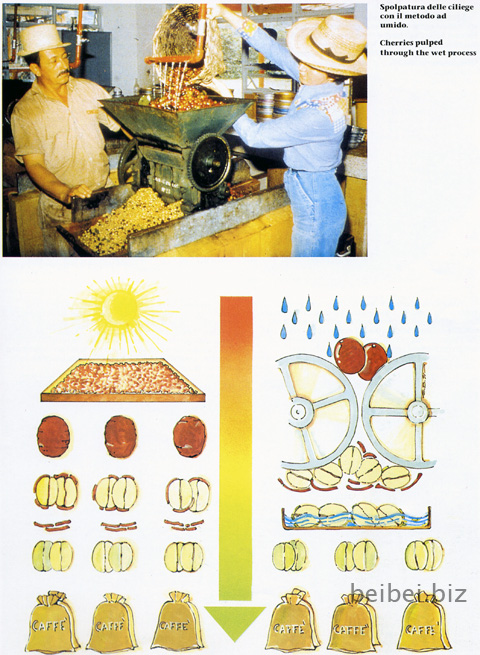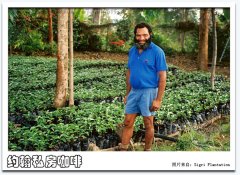Wet and drying methods for post-harvest processing of coffee beans
After the harvest coffee bean processing: coffee berries must be processed immediately after picking to prevent pulp fermentation and decay. Coffee beans can be processed in two ways, wet and dry.
Drying method
The drying method is also called "natural method". Spread the coffee berries flat in the sun to dry. In the plantation, 50 square meters of coffee berries are spread on each hectare, or the fruits are dried in a special dryer. Put the dried coffee berries into two rollers (cylinder) to separate the coffee beans, and then sieve the type of device to separate the coffee beans from the endocarp. Finally, similar beans are screened out according to the shape and size of coffee beans, packaged and put on the market. In the final screening process, round beans (perla/caracolito) are screened out and sold separately.

Wet processing
Wet-processed coffee beans are also known as "washed beans". Wash the fresh coffee berries, remove the pulp, and soak the coffee beans in water for 36 hours to ferment the coffee beans. The peel that is still wrapped on the coffee beans will be peeled off. After rough cleaning, the coffee beans are dried in the sun or in a dryer to remove the last layer of film, so that the coffee beans become "naked" coffee beans. Then select the classification according to the size of coffee beans.
It is packed in a unit weight of 60 kilograms each. Generally speaking, the quality of wet-processed coffee beans is better than that of dried coffee beans.
The process of screening coffee beans, using manual work like the one described above, or machine screening, can select high-quality coffee beans without mixing immature or poor-quality beans. Countries that grow high-quality coffee varieties have long had advanced equipment to screen out the perfect coffee beans.

Important Notice :
前街咖啡 FrontStreet Coffee has moved to new addredd:
FrontStreet Coffee Address: 315,Donghua East Road,GuangZhou
Tel:020 38364473
- Prev

Traditional Coffee processing techniques in Yunnan Chinese Coffee Bean treatment
Yufa, which opened in the 1960s and has a history of more than 50 years, stepped into the store as if it had stepped into a time tunnel. The machines displayed in the shop have been used for more than half a century, and the old appliances have found their old flavor. Fang found that the old appliance is not only a kind of nostalgia, but also the accumulation of traditional wisdom of the older generation. Since the spread of self-made coffee from a Hainan chef, the boss of the main coffee supplier to the old villagers in the town has insisted
- Next

Washed coffee in Sigri boutique coffee bean farm
Having nothing to do, I was looking for some information about Sigri farm coffee in Papua New Guinea. I found these photos and information on the Gimmetries Coffee website. Sigri Plantation is located in the Papua New Guinea highlands. Growing conditions here are well-suited for coffee: about 5200 feet above
Related
- What is the meaning of lactic acid fermentation with coffee bean treatment?
- How to judge the state of foam by sound?
- How does the latte pull out the unicorn pattern? Come to get for a little trick to improve the flower pull!
- Will flower pulling affect the taste of the latte?
- Do you know the history of coffee?
- The difference between honey treatment and sun washing what is raisin honey treatment?
- What kind of milk can a novice use to make coffee foam to keep the foam longer? The correct method and skills of milking tutorial sharing
- Why do washed coffee beans taste sour? Flavor characteristics of washed Coffee
- Introduction to the skill of how to practice the size and height of water injection around the circle of hand-brewed coffee
- How do beginners practice coffee flower drawing from scratch?

